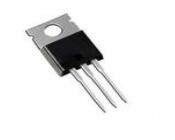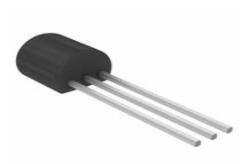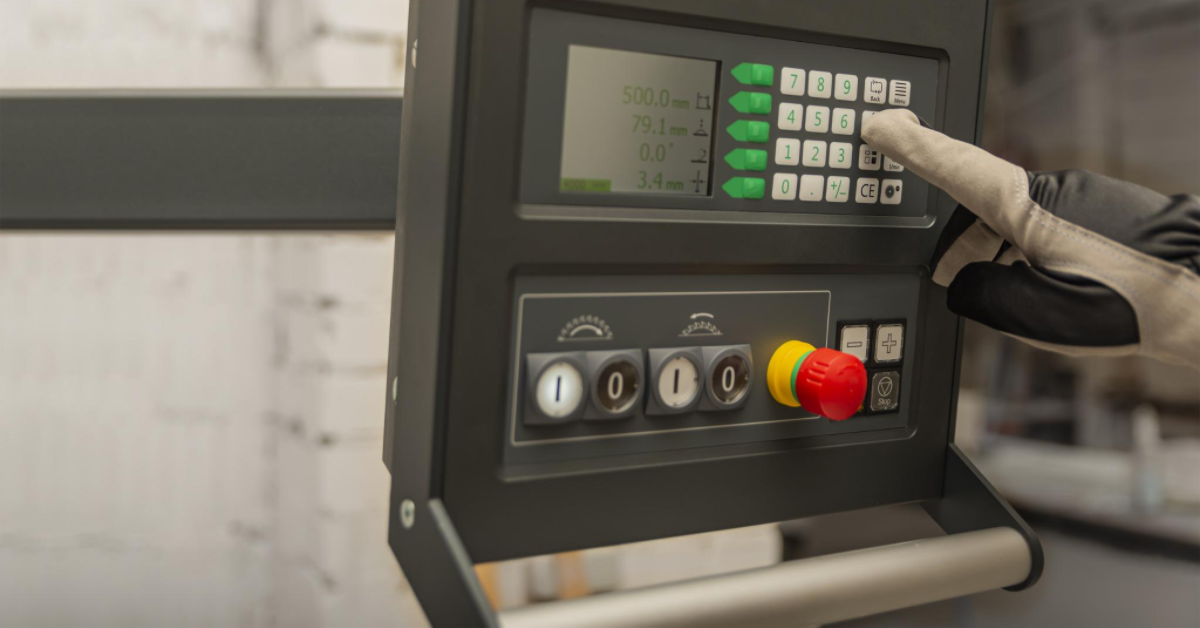SR621SW Silver Oxide Watch Battery 1.55V, 23 mAh : SR621SW VS SR626SW, Datasheet and Equivalents
BATTERY SLVR OX 1.55V COIN 6.8MM
The SR621SW is a Silver-Oxide cell that is commonly used in timepieces. This article is going to talk about more detailed information about SR621SW.

How To Change A Watch Battery - Watch and Learn #43
Overview of SR621SW
The SR621SW is a Silver-Oxide cell that is commonly used in timepieces and has a 5-year shelf life. Calculators, film cameras, medical instruments, cash registers, and FA instruments are examples of other applications (measuring instruments, onboard microcomputers, sensors). This is a low-drain "SW" battery. Low-drain batteries are ideal for devices that require a tiny amount of power over a long period of time, such as analog timepieces, TV remote controls, and alarm clocks. This is in contrast to high-drain batteries, which are used in devices with constant low power consumption and occasional high peaks, such as analog and digital watches with additional functions (backlight, alarm), pocket calculators, electronic games, cameras, and so on. Specifications Chemistry: Oxide of silver 1.55V voltage 6.8 mm in diameter Dimensions: 2.2 mm Dimensions: 2.2 mm Dimensions: 2.2 mm Low-Drainage Style.
SR621SW Dimensions

SR621SW Dimensions
Specifications
- TypeParameter
- Factory Lead Time14 Weeks
- Weight0.32g
- Voltage Rated
RATED voltage is the voltage on the nameplate - the "design point" for maximum power throughput and safe thermal operation.
1.55V - Size / Dimension
In electronic components, the parameter "Size / Dimension" refers to the physical dimensions of the component, such as its length, width, and height. These dimensions are crucial for determining how the component will fit into a circuit or system, as well as for ensuring compatibility with other components and the overall design requirements. The size of a component can also impact its performance characteristics, thermal properties, and overall functionality within a given application. Engineers and designers must carefully consider the size and dimensions of electronic components to ensure proper integration and functionality within their designs.
0.27Dia x 0.08 H 6.8mmx2.0mm - Part Status
Parts can have many statuses as they progress through the configuration, analysis, review, and approval stages.
Active - Moisture Sensitivity Level (MSL)
Moisture Sensitivity Level (MSL) is a standardized rating that indicates the susceptibility of electronic components, particularly semiconductors, to moisture-induced damage during storage and the soldering process, defining the allowable exposure time to ambient conditions before they require special handling or baking to prevent failures
Not Applicable - Termination Style
"Termination style" in electronic components refers to the method used to connect the component to a circuit board or other electronic devices. It determines how the component's leads or terminals are designed for soldering or mounting onto the circuit board. Common termination styles include through-hole, surface mount, and wire lead terminations.Through-hole components have leads that are inserted through holes in the circuit board and soldered on the other side. Surface mount components have flat terminals that are soldered directly onto the surface of the circuit board. Wire lead terminations involve attaching wires to the component for connection.The choice of termination style depends on factors such as the type of component, the manufacturing process, and the space available on the circuit board. Different termination styles offer various advantages in terms of ease of assembly, reliability, and space efficiency in electronic designs.
Requires Holder - Battery Chemistry
A battery is a device that stores chemical energy, and converts it to electricity. This is known as electrochemistry and the system that underpins a battery is called an electrochemical cell. A battery can be made up of one or several (like in Volta's original pile) electrochemical cells.
Silver Oxide - Battery Cell Size
The most common lithium-ion cell is the 18650 (the numbers define the physical dimensions and shape as follows: 18mm in diameter, 65mm long and the 0 means it has a round cross-section) which is due to its widespread use in laptop battery packs.
Coin 6.8mm - Capacity
In electronic components, "Capacity" typically refers to the maximum amount of electrical charge that a component can store. It is measured in units called farads (F). Capacitors are the most common components that have a capacity rating. The capacity of a capacitor determines how much energy it can store and release when connected in a circuit. Higher capacity capacitors can store more charge and are often used in applications requiring larger energy storage or filtering capabilities. It is important to select a capacitor with the appropriate capacity to ensure proper functioning of the circuit.
23mAh - Discharge Rate
The "Discharge Rate" in electronic components refers to the rate at which a component can release stored energy or power. This parameter is particularly important in devices that use batteries or capacitors, as it determines how quickly these components can discharge their stored energy. A high discharge rate means that the component can release energy quickly, while a low discharge rate indicates a slower release of energy. Understanding the discharge rate of electronic components is crucial for designing circuits and systems that require specific power delivery characteristics.
40μA - RoHS Status
RoHS means “Restriction of Certain Hazardous Substances” in the “Hazardous Substances Directive” in electrical and electronic equipment.
ROHS3 Compliant
SR621SW Electrical Characteristics

SR621SW Electrical Characteristics
SR621SW Applications
Timepieces
TV remote controls
Alarm clocks
Pocket calculators
Electronic games
Cameras
SR621SW VS SR626SW
| SR621SW | SR626SW | |
| Weight | 0.32g | 0.39g |
| Capacity | 23mAh | 28mAh |
| Size / Dimension | 0.27Dia x 0.08 H 6.8mmx2.0mm | 0.27Dia x 0.10 H 6.8mmx2.6mm |
| Images |  |
|
Conclusions of SR621SW VS SR626SW:
The SR626SW and SR621SW batteries are only 0.5 mm apart in height, which isn't much; however, while battery compartments designed for SR626SW batteries may accommodate smaller SR621SW batteries, contact with the SR621SW battery may not be completely dependable. Because the SR621SW is the same width as the SR626SW, it will fit in the battery slot perfectly, but it will be somewhat shorter. The SR626W was a silver oxide battery meant for high drain use in older LED digital watches, while the SR626SW is a less expensive alkaline battery designed for newer low drain watches.
SR621SW Equivalents
SR60
280-34
D364
SB-AG
SB-DG
TR621SW
Warnings about SR621SW
Forbid short-circuit, charge between”+” and”-“.
Forbid over-discharge, fire, damage.
Finish sealing less more than 5 seconds at 200 C~250 C;
Take out the battery when discharging to cut-off voltage, and embed it under the ground or jump in the deep water.
SR621SW Manufacturer
Seiko Instruments Inc. (SII) was founded in 1937 as the Seiko Group's primary watch manufacturer. The company provides micro mechatronics products and services, such as watch and HDD components, semiconductors, FPD and electronic devices, network solutions systems, nanotechnology equipment, scientific instruments, and large-format inkjet printers, based on sophisticated micro mechatronics and nanotechnology techniques developed through decades of experience in precision machinery manufacturing and low-power consumption technologies.
Datasheet PDF
- Datasheets :
- MSDS Material Safety Datasheet :
Popularity by Region
What battery replaces SR621SW?
364 Battery is a direct replacement for SR621SW, SR60, SR621, SB-AG/DG, 280-34, T, V364, D364, 602, S621E, GP364, AG1, AG-1, 364, L621, LR621, SG1, LR60, LR620, SW621, GP164, 364X, 364A, AG1/364A, SB-AG, E364 batteries.
What’s the Impedance of SR621SW?
5 to 15 ohms.
What’s the Nominal Voltage of SR621SW?
1.55 Volts.
What’s the capacity of SR621SW?
23mAh.
What’s the Discharge Rate of SR621SW?
40μA.
What’s the battery material of SR621SW?
Silver Oxide.
 IRF3710 N-Channel Power MOSFET: Equivalent, Datasheet, Pinout
IRF3710 N-Channel Power MOSFET: Equivalent, Datasheet, Pinout11 January 202214361
 74HC373 Octal D-type Transparent Latch: Datasheet pdf, Schematics and Pinout
74HC373 Octal D-type Transparent Latch: Datasheet pdf, Schematics and Pinout18 December 20216608
 J111 JFET Transistor: J111 Datasheet, Pinout, Equivalent
J111 JFET Transistor: J111 Datasheet, Pinout, Equivalent12 April 20226861
 Understanding the dsPIC33EPXXXGP50X, dsPIC33EPXXXMC20X/50X, and PIC24EPXXXGP/MC20X Microcontrollers
Understanding the dsPIC33EPXXXGP50X, dsPIC33EPXXXMC20X/50X, and PIC24EPXXXGP/MC20X Microcontrollers29 February 2024115
 A Comprehensive Guide to LTC7840EFE#PBF DC DC Switching Controller
A Comprehensive Guide to LTC7840EFE#PBF DC DC Switching Controller06 March 202486
 A Comprehensive Guide to LTC6948IUFD-3 Clock/Frequency Synthesizer
A Comprehensive Guide to LTC6948IUFD-3 Clock/Frequency Synthesizer06 March 2024202
 DS18B20 1-Wire Digital Thermometer:Pinout, Datasheet, and Applications
DS18B20 1-Wire Digital Thermometer:Pinout, Datasheet, and Applications17 April 20255443
 DL2025 And CR2025: Are they Equivalents In Most Cases?
DL2025 And CR2025: Are they Equivalents In Most Cases?23 February 202224742
 What is a Server CPU?
What is a Server CPU?22 December 202110786
 Chinese Chip Equipment Makers Thrive Amid US Restrictions
Chinese Chip Equipment Makers Thrive Amid US Restrictions24 October 2023542
 What is the Ripple of the Power Supply, How to Measure its Value, and How to Suppress it?
What is the Ripple of the Power Supply, How to Measure its Value, and How to Suppress it?23 November 20218602
 The Art of Microchips: A Journey from Sand to Silicon
The Art of Microchips: A Journey from Sand to Silicon12 September 20232397
 A Guide to Semiconductor IP Core
A Guide to Semiconductor IP Core18 January 20228737
 Voltage Supervisor ICs: Solutions for IoT, Automotive, and Industrial Applications
Voltage Supervisor ICs: Solutions for IoT, Automotive, and Industrial Applications04 June 2025461
 Detailed Explanation About Twenty Kinds of Capacitor
Detailed Explanation About Twenty Kinds of Capacitor08 November 20217881
 Power Management Integrated Circuit (PMIC) Guide
Power Management Integrated Circuit (PMIC) Guide10 February 202212642
Seiko Instruments
In Stock
United States
China
Canada
Japan
Russia
Germany
United Kingdom
Singapore
Italy
Hong Kong(China)
Taiwan(China)
France
Korea
Mexico
Netherlands
Malaysia
Austria
Spain
Switzerland
Poland
Thailand
Vietnam
India
United Arab Emirates
Afghanistan
Åland Islands
Albania
Algeria
American Samoa
Andorra
Angola
Anguilla
Antigua & Barbuda
Argentina
Armenia
Aruba
Australia
Azerbaijan
Bahamas
Bahrain
Bangladesh
Barbados
Belarus
Belgium
Belize
Benin
Bermuda
Bhutan
Bolivia
Bonaire, Sint Eustatius and Saba
Bosnia & Herzegovina
Botswana
Brazil
British Indian Ocean Territory
British Virgin Islands
Brunei
Bulgaria
Burkina Faso
Burundi
Cabo Verde
Cambodia
Cameroon
Cayman Islands
Central African Republic
Chad
Chile
Christmas Island
Cocos (Keeling) Islands
Colombia
Comoros
Congo
Congo (DRC)
Cook Islands
Costa Rica
Côte d’Ivoire
Croatia
Cuba
Curaçao
Cyprus
Czechia
Denmark
Djibouti
Dominica
Dominican Republic
Ecuador
Egypt
El Salvador
Equatorial Guinea
Eritrea
Estonia
Eswatini
Ethiopia
Falkland Islands
Faroe Islands
Fiji
Finland
French Guiana
French Polynesia
Gabon
Gambia
Georgia
Ghana
Gibraltar
Greece
Greenland
Grenada
Guadeloupe
Guam
Guatemala
Guernsey
Guinea
Guinea-Bissau
Guyana
Haiti
Honduras
Hungary
Iceland
Indonesia
Iran
Iraq
Ireland
Isle of Man
Israel
Jamaica
Jersey
Jordan
Kazakhstan
Kenya
Kiribati
Kosovo
Kuwait
Kyrgyzstan
Laos
Latvia
Lebanon
Lesotho
Liberia
Libya
Liechtenstein
Lithuania
Luxembourg
Macao(China)
Madagascar
Malawi
Maldives
Mali
Malta
Marshall Islands
Martinique
Mauritania
Mauritius
Mayotte
Micronesia
Moldova
Monaco
Mongolia
Montenegro
Montserrat
Morocco
Mozambique
Myanmar
Namibia
Nauru
Nepal
New Caledonia
New Zealand
Nicaragua
Niger
Nigeria
Niue
Norfolk Island
North Korea
North Macedonia
Northern Mariana Islands
Norway
Oman
Pakistan
Palau
Palestinian Authority
Panama
Papua New Guinea
Paraguay
Peru
Philippines
Pitcairn Islands
Portugal
Puerto Rico
Qatar
Réunion
Romania
Rwanda
Samoa
San Marino
São Tomé & Príncipe
Saudi Arabia
Senegal
Serbia
Seychelles
Sierra Leone
Sint Maarten
Slovakia
Slovenia
Solomon Islands
Somalia
South Africa
South Sudan
Sri Lanka
St Helena, Ascension, Tristan da Cunha
St. Barthélemy
St. Kitts & Nevis
St. Lucia
St. Martin
St. Pierre & Miquelon
St. Vincent & Grenadines
Sudan
Suriname
Svalbard & Jan Mayen
Sweden
Syria
Tajikistan
Tanzania
Timor-Leste
Togo
Tokelau
Tonga
Trinidad & Tobago
Tunisia
Turkey
Turkmenistan
Turks & Caicos Islands
Tuvalu
U.S. Outlying Islands
U.S. Virgin Islands
Uganda
Ukraine
Uruguay
Uzbekistan
Vanuatu
Vatican City
Venezuela
Wallis & Futuna
Yemen
Zambia
Zimbabwe





















